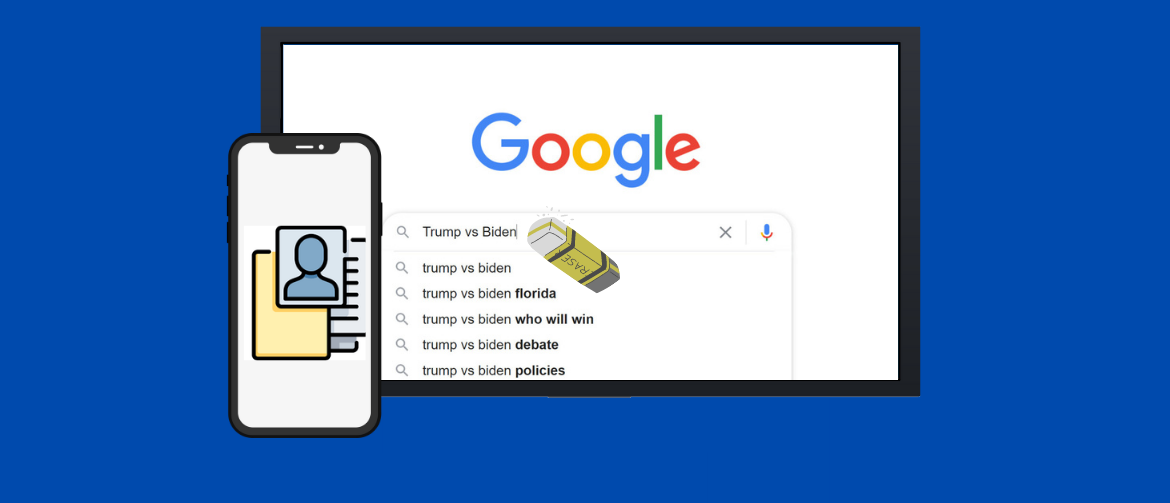Once you start going online, opening social media accounts, doing some online shopping or emailing friends and colleagues, you create a digital footprint that includes a vast amount of your personal information. Anyone with a computer, tablet or other devices with access to the internet can find all of your personal information with a few clicks.
All they have to do is start with a Google search of your name and up pops your address, birth date, email addresses, phone numbers, family member names, marital status, tax and property information and – well, that list goes on and on. And that’s a huge problem for anyone who values their privacy. The bottom line is that everyone should value their privacy.
Here’s why: bad things can happen when the wrong people gain access to your personal information, namely cybercriminals. They commit fraud using your name and other pertinent information, along with financial identity theft, synthetic identity theft, medical identity theft, child identity theft – the list goes on and on. Once they have access to some of your personal information, they can piece together more data about you until they end up with your Social Security number. They can take over your bank accounts, open up credit in your name and create all kinds of problems for you. Since this all begins with a Google search of your name, the first thing you may ask is, “how to remove my personal information from Google?”
Google Crawls the Internet
Each day, millions of Google cyber-bots crawl billions of pages on the internet, searching for anything associated with your name. The more information those cyber-bots can find, the more information Google can put together for advertisers who want to send highly targeted messages to consumers. That’s how Google makes its money – it’s all part of their business model that has helped them generate over 146.9 billion USD revenue in 2020.

In addition to crawling the internet with its cyber-bots, Google gets a lot of their information about you from data brokers, which are widely known as people-search sites. Those sites have volumes of your personal information and sell it to anyone willing to pay for it.
Unfortunately, that includes cybercriminals. On top of exposing your personal data to everyone, an even bigger problem is that there is no guarantee of the accuracy of the information they’re selling. It’s often erroneous, which can easily do damage to your reputation.
Start Removing Your Personal Information
Some companies claim they can remove your personal information from the internet – and they’re happy to do it for what is often a very hefty fee. The fact is, you can do it yourself for free – if you know how to go about it. Fortunately, it’s not something that requires a lot of advanced technical knowledge.
Steps to Remove Personal Information from the Internet for Free
Surely, the key is to remove as much of your personal information as possible from Google since that’s where people go to search your name. To do that, you have to start with removing your data from those people-search sites. However, you should know that there are over 100+ people-search sites, and each one has its own methods for you to delete information and opt-out. Some even require faxing documents and other antiquated steps.

Step#1
To ensure your inbox doesn’t fill up with spam during your opt-out quest, use a disposable email service like Mailnator or E4ward, to name a few. You create an email account using these services, and all the spam emails will go to that account instead of your regular one.
Step#2
Once you’ve opted out of people-search sites, it’s time to move on to your web pages or blogs, removing all information from those sites. If Google’s bots can’t find them, they can’t list them on their results page.
Step#3
Next, you’ll want to prevent Google from indexing your social media accounts. Start by changing your privacy settings on all social media accounts to maximum privacy, and then move on to remove any sensitive data remaining in your profile. Here’s something else to consider. Indeed, if you’ve removed your private data from any websites you control, but the link still shows up on Google’s search engine, ask Google to delete the outdated content.
Step#4
If personal information shows up on sites you don’t control, like a former employer’s “about us” page, for example, you’ll need to contact the site’s owner and ask to have your information deleted. Hopefully, most will agree to do so. You may have posted an article or white paper on someone else’s website or had a blog that included your name and other information. Those are websites you should contact in order to have the information removed. So, Google’s policy page even provides you with some tips on how to do this.
Don’t Forget to Ask Google
If someone has published personal data about you that violates any of Google’s policies, Google will remove that information if you ask them to. This can include anything that could pose risks of identity theft, financial fraud or any other type of harm. Items like sensitive medical or financial data, non-consensual explicit images and fake data, among others, are all types of information that Google will remove. To start the ball rolling, you’ll need to fill out one of Google’s information removal forms.

Hopefully, this guide will aid our readers in removing personal information from the internet and search engines like Google.



